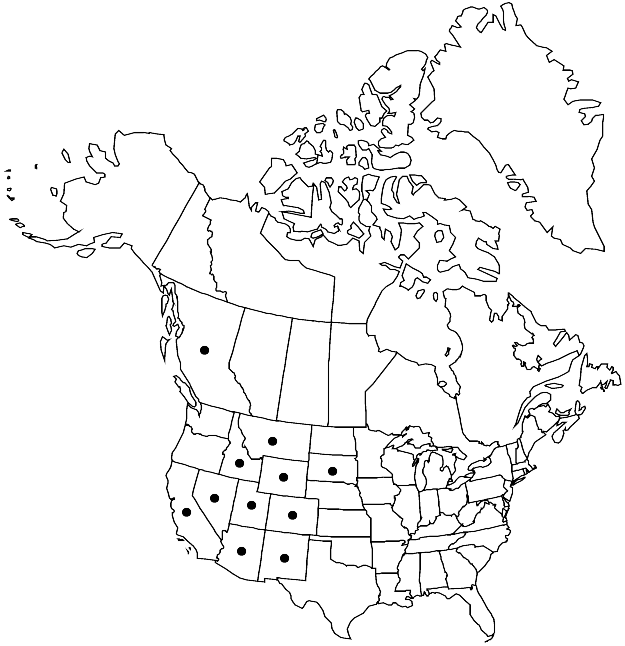Orthotrichum hallii
in W. S. Sullivant, Icon. Musc., suppl., 63, plate 45. 1874.
Plants to 2.5 cm. Stems erect; leaves similar on vegetative and fertile stems. Stem-leaves loosely erect-appressed when dry, elongate-lanceolate to lanceolate, 1.7–3.5 mm; margins revolute proximally, recurved to almost plane near apex, entire; apex ± narrowly obtuse, rarely bluntly acute; basal laminal cells rectangular to short-rectangular, grading to quadrate at margins, walls thin, not nodose; distal cells 7–13 µm, 2-stratose, rarely with few 1-stratose areas, papillae 1–3 per cell, conic, small; marginal cells mostly to completely 2-stratose. Specialized asexual reproduction absent. Sexual condition gonioautoicous. Seta 0.5–1 mm. Capsule 1/2 emergent when dry, immersed when moist, oblong or oblong-ovate, 1–1.8 mm, strongly 8-ribbed to mid capsule or entire length, rarely with 8 very short intermediate ribs, sometimes constricted below mouth when dry; stomata immersed; peristome double; prostome present, occasionally rudimentary; exostome teeth 8, sometimes irregularly split to 16, incurved becoming spreading or rarely reflexed when old, coarsely striate-reticulate or striate-papillose; endostome segments 8, not well developed, of 1 row of cells, short, finely longitudinally striate. Calyptra oblong, smooth, sparsely hairy, hairs papillose. Spores 10–17 µm.
Habitat: Rock, usually limestone or calcareous sandstone, granite, quartzite, basalt, trunks of deciduous trees, open pine forests, spruce-fir forests, deciduous scrub oak-maple forests, vertical canyon walls, shaded cliff faces
Elevation: moderate to high elevations (200-3000 m)
Distribution

B.C., Ariz., Calif., Colo., Idaho, Mont., Nev., N.Mex., S.Dak., Utah, Wyo.
Discussion
Orthotrichum hallii is distinguished by leaves that are completely or nearly 2-stratose in their distal portion, and emergent, oblong, 8-ribbed capsules. The peristome teeth vary from ridged-striate to papillose-striate; the proximal portions of the teeth are often coarsely papillose with the distal portions having striae mixed with papillae, and the papillae are always small and conic.
Selected References
None.
Lower Taxa
"-ribbed" is not declared as a valid unit of measurement for this property.